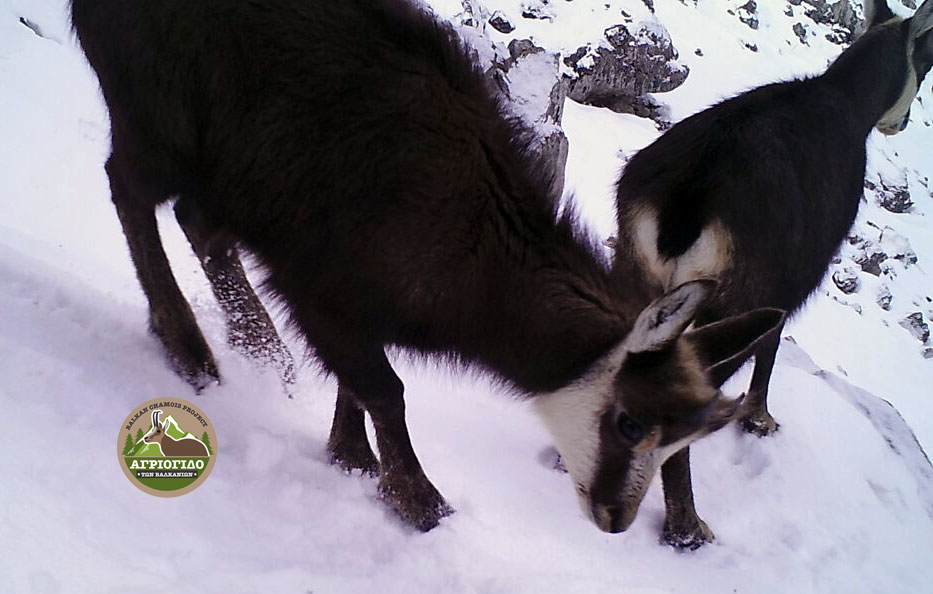Threats
 The main recorded threat to the conservation of the Chamois in Greece remains poaching, followed by the opening and use of forest and mountain roads within its habitats, which greatly facilitate access for poachers. The obvious inability of the state to effectively contribute to the reduction of poaching and the indifference of the majority of citizens and local authorities have ultimately resulted in encouraging the continuation of poaching activities, which, in some cases, have reached complete lawlessness.
The main recorded threat to the conservation of the Chamois in Greece remains poaching, followed by the opening and use of forest and mountain roads within its habitats, which greatly facilitate access for poachers. The obvious inability of the state to effectively contribute to the reduction of poaching and the indifference of the majority of citizens and local authorities have ultimately resulted in encouraging the continuation of poaching activities, which, in some cases, have reached complete lawlessness.
Legal hunting of the Chamois does not exist in Greece, as the species has been protected since 1969 to this day. However, there are few cases where a significant increase in Chamois populations has been recorded. In the majority of cases, it appears that the Chamois populations show occasional fluctuations, depending on the actions of local poachers, who in some cases are capable of completely eliminating entire populations. In reality, the problem lies in the lack of effective guarding.
Regarding the opening and use of mountain and forest roads, we note the following: The roads negatively impact the Chamois, as they are associated either with facilitating poachers or with the more frequent and intense presence of humans, leading to disturbances caused by activities of individuals in the Chamois’s habitat for various reasons.
As a result, especially when these activities are intense, continuous, or often repeated, the Chamois are unable to adapt and retreat to the more remote areas of their available habitat, which may not be the most suitable in terms of food supply, shelter from predators, and protection from weather conditions. This creates a situation that, sooner or later, will lead to negative consequences for the Chamois population’s development. Roads that are opened in the mountains for the establishment of wind farms exacerbate this problem, and additionally, the land occupied for their operation leads to the shrinkage and degradation of the Chamois’s habitat.
Another major issue that holds back the survival of the Chamois is the fragmentation of its habitats throughout the range of its natural distribution. Core areas of Chamois populations are scattered over a significant part of mainland Greece’s mountains, but many of them are quite isolated and, therefore, very difficult—if not impossible—to exchange individuals and, consequently, genetic material with other populations. This fact alone poses risks for the future of these populations, due to continuous inbreeding and ultimately an increase in homozygosity. This is more noticeable in areas with small populations of Chamois, where large obstacles (such as major highways, artificial lakes, etc.) intervene in interpopulation communications, thus contributing to the complete geographical isolation of these populations and, consequently, their genetic weakening.
 The presence of domestic animal herds near or within Chamois habitats affects the way Chamois use space. A significant risk is the potential transmission of diseases from domestic animal herds to Chamois.
The presence of domestic animal herds near or within Chamois habitats affects the way Chamois use space. A significant risk is the potential transmission of diseases from domestic animal herds to Chamois.
The promotion of mass tourism projects, such as ski resorts and other large-scale tourist infrastructure, as well as large-scale mineral extraction in Chamois habitats, negatively impacts the Chamois.
Furthermore, attempts for potential introductions and releases of Chamois into natural habitats from other regions—which officially, at least, do not seem to have occurred in our country until now—always involve the risks of genetic alteration of local populations. However, if it is deemed necessary to proceed, specific standards set by the scientific community must be met. Recently, it has been reported that a few Chamois exist in Parnitha, and if this is indeed the case, it would be the result of artificial releases of the species there by humans in the past. It is also possible that in the Rhodope mountain range, the Chamois population has now been hybridized as a result of releases with individuals of another subspecies, which may have occurred across the border in Bulgaria.
Finally, climate change and the transition to warmer climate conditions in our country could negatively affect Chamois populations, particularly those in southern Greece.

